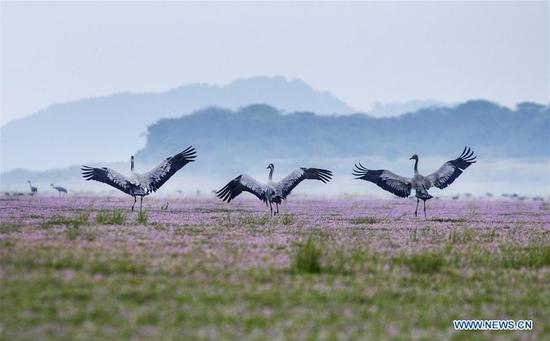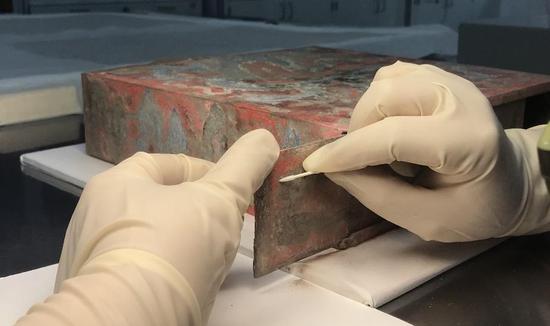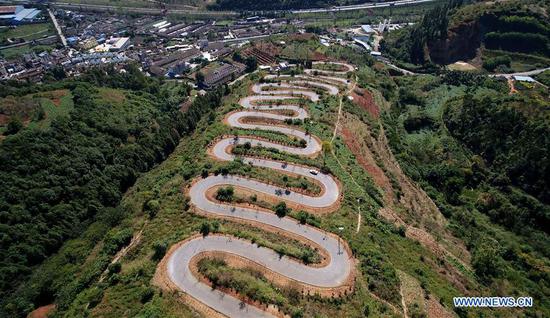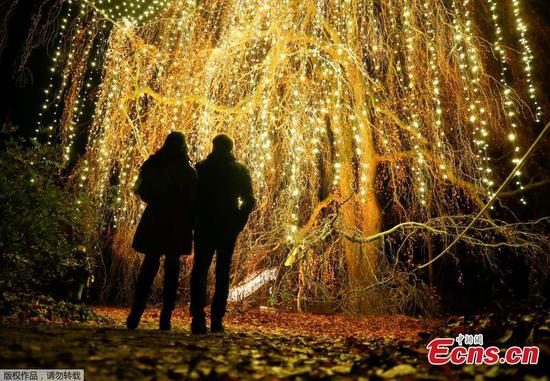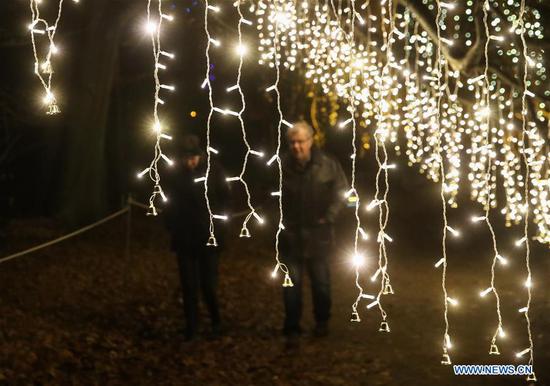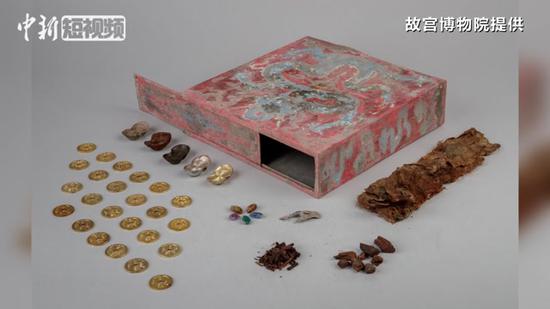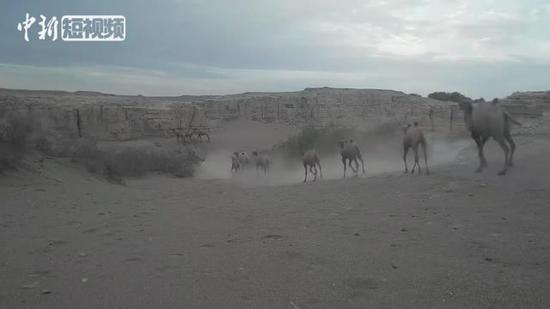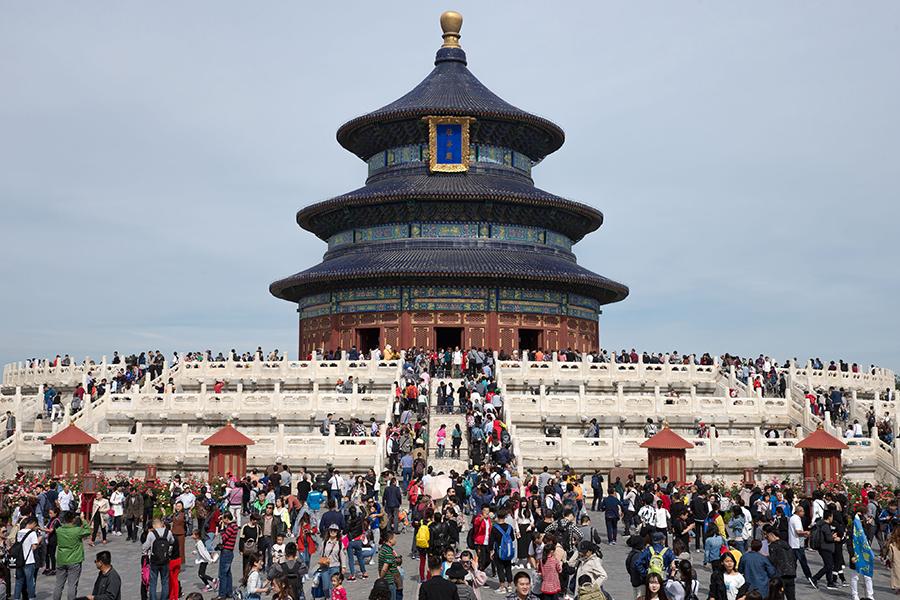
The Temple of Heaven is a symbol of feudal imperial ideology and its profound ritual culture. (PHOTO BY SU YANG/FOR CHINA DAILY)
The Central Axis of Beijing provides a convenient way to discover different aspects of this multifaceted city
Antonio Roberto Quiroz Soto had a great time in Beijing during the summer. A Mexican student of Sinology at the Yenching Academy of Peking University, Soto explored the history, trends and customs of the capital's Central Axis during the International Youth Tourism Festival, which was hosted by the Beijing Municipal Commission of Tourism Development from July 10 to October 26.
"I have a strong interest in Chinese history and culture and I signed up without a second thought," says Soto.
"I have been in Beijing for seven years, and Beijing is like my second home," he adds.
Soto covered three of the five Central Axis routes that explore the themes of history, art, folk customs, trends and development along the capital's North-South axis that runs 7.8 kilometers from the Drum and Bell Towers in the north to Yongdingmen in the south.
First created in the Yuan Dynasty (1271-1368), the original Axis was 3.7 kilometers in length. It was extended during the Ming (1368-1644) and Qing (1644-1911) dynasties.
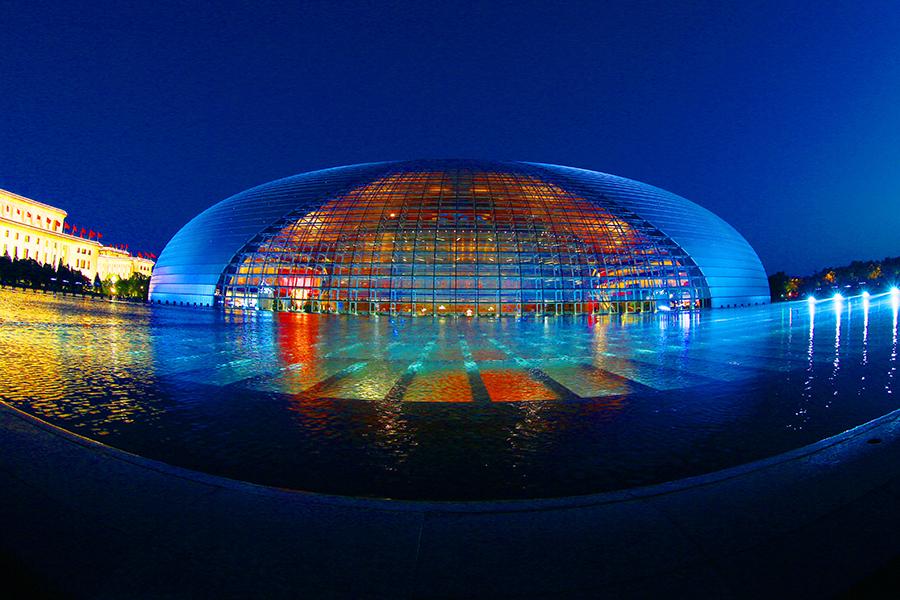
National Centre for the Performing Arts. (PHOTO BY CHEN XIAOGEN/FOR CHINA DAILY)
Fourteen historical sites along the axis, including Qianmen, the Forbidden City, Jingshan Park, the Drum and Bell Towers, Chairman Mao Zedong Memorial Hall, the Monument to the People's Heroes and Tiananmen Square have been identified as key heritage sites.
Soto visited Qianmen and a few time-honored shops and the Beijing Fun zone and learned about their history.
"The Beijing Fun zone combines old Western and Chinese style buildings with modern architecture," he says. "I found it very beautiful and interesting, proof of how tradition and innovation can harmoniously coexist."
Soto also learned about the role the Emperor played in the ancient society during his visit to the Temple of Heaven, while being inside Xiannongtan (Beijing Ancient Architecture Museum) made him "feel closer to ancient Chinese culture."
He has now signed up for the ancient Chinese architecture class at Peking University as part of his master's degree curricula after seeing the beautiful and complicated structures of the ancient architecture.
Soto was among 100 foreign students and tourists from more than 30 countries and regions who participated in the event.
They visited scenic spots, historical buildings and gardens, hutong (the capital's old alleyways), former residences of historical figures, time-honored shops and today's vibrant urban culture, as well as learning more about Beijing's imperial culture, folk art and customs.
The event has drawn the attention of 1.41 million online users abroad through the posts of the foreign participants, according to the Beijing tourism commission.
The tourism commission expects the festival to play an active role in boosting youth cultural exchanges between China and foreign countries and help promote the application for the Central Axis to be included as part of the world's cultural heritage.

Ice activities in Beihai Park. (PHOTO BY ZOU HUAILIN/FOR CHINA DAILY)
An application is to be made for World Heritage status in 2035, according to the municipal administration of cultural heritage.
"The Axis represents the highest standards of Chinese ancient landscaping and architecture design and development," says Yu Ping, deputy director of the cultural heritage administration.
"The architecture (along the Axis) not only represents the ancient capital, it also represents part of the history of Chinese civilization," Yu adds.
The Beijing government earlier unveiled a general plan for the development of the Central Axis from 2016 to 2035. A plan to prepare the Axis for its world heritage application is now being made.
"The world heritage application will not only be a protection of Beijing's cultural heritage, but more of a growth pole for development of Beijing's new tourism culture," says Wang Yue, deputy director of the Beijing tourism commission.
During his excursions along the Central Axis, Soto was also amazed by the museum of Chinese traditional medicine and Lu Xun's old residence on the folk custom route.
"It was really impressive to see all these herbs and other ingredients together at the museum and to learn about acupuncture," he says.
"It's also interesting to see how the author Lu Xun influenced Chinese society."
Soto got to be the host on the Central Axis trends route at the end of the tourism festival.
He went to Shichahai, Wangfujing, Xianyukou, Yangmeizhu Xiejie, and other trendy destinations along the Central Axis, and interviewed foreigners.
"These places are ideal for young people to enjoy food, music, performances and exhibitions, as well as shopping and just strolling around," he says.
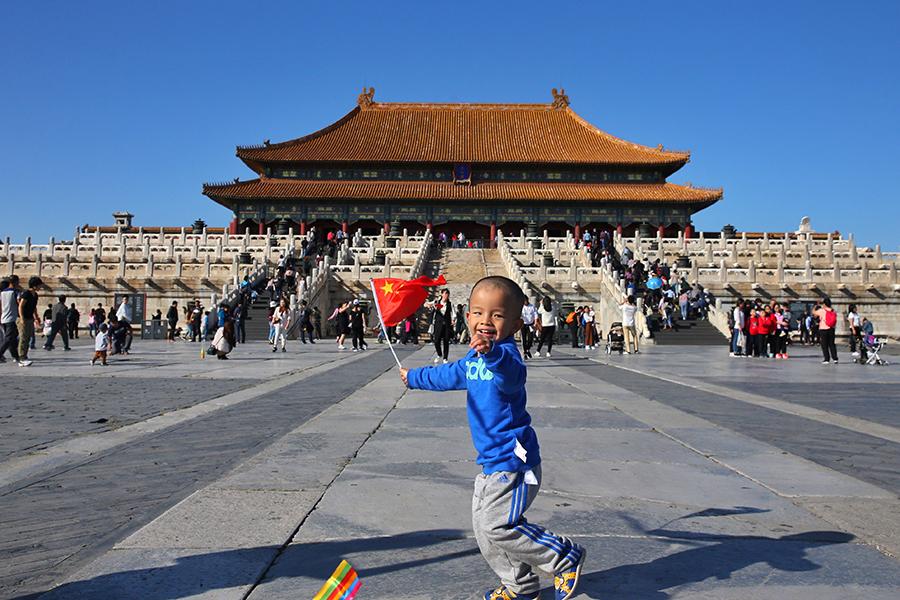
The Palace Museum at the center of the Central Axis. (PHOTO BY JIANG DONG/CHINA DAILY)
"We found that foreigners are impressed by Beijing, and find it a very diverse and cultural city, with a lot of fun stuff to do, from bars and restaurants to museums and galleries."
Soto himself gained a lot of knowledge about culture and folklore in the capital through the youth tourism festival.
"Through this event, I learned how important each of these places was when Beijing was the capital of Imperial China and the many fascinating stories behind them. Now my feelings for Beijing are deeper, as well as my understanding of Beijing," he says.
Soto believes that the next event will be even more exciting.
"At that time, I will not only participate in it myself, but also invite my friends. I believe this is not the end, but a new beginning," he says.
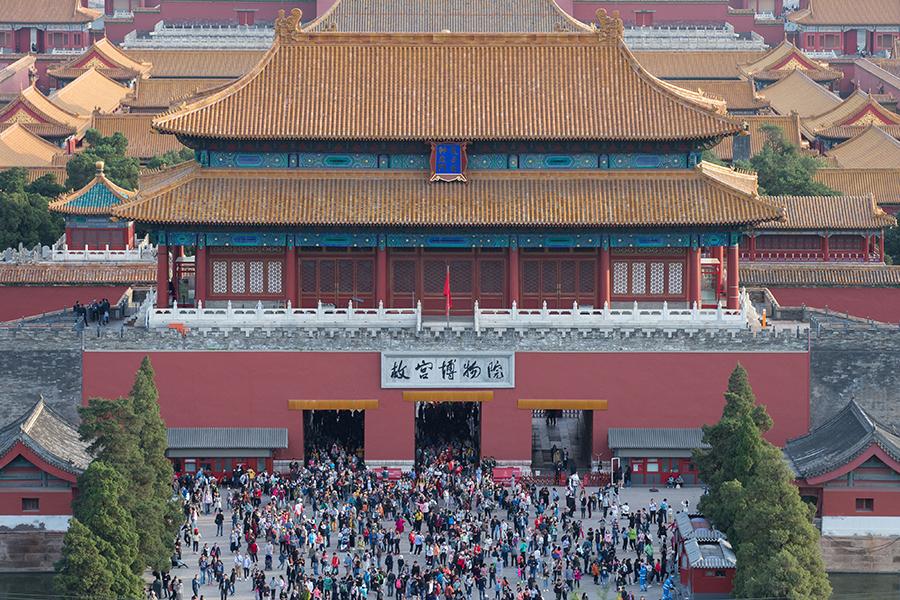
Themed routes along the Central Axis
Royal The Palace Museum-Jingshan Park-Beihai Park
The Palace Museum stands at the center of the Central Axis and is known as the biggest and most complete ancient palace complex in the world. This route offers a bird's-eye view of the museum from Jingshan and the picturesque scenery of the royal gardens and lake in Beihai Park.
Architecture
Temple of Heaven-Xiannongtan-Yongdingmen
The Temple of Heaven and Xiannongtan, the Temple of Agriculture, are symbols of feudal imperial ideology and its profound ritual culture. At Yongdingmen, the southern end of the Central Axis, tourists can climb the tower to overlook the whole of Central Axis and take in the charm of Beijing.
Rhyme
Beijing folk culture
The route covers Beijing's renowned art facilities, such as Laoshe Teahouse, Huguang Guild Hall and Tianqiao Art Center, which stages performances of traditional crosstalk and Peking Opera. It's one of the best ways to experience the civil culture and folk art of this ancient capital.
Art
Yishu 8-National Art Museum-Beijing People's Art Theatre-National Centre for the Performing Arts
Beijing's profound history and culture have been preserved in its artistic works. The Yishu 8 offers pioneering art innovation, while the National Art Museum displays the country's art treasures. Modern art performances can be enjoyed at the Beijing People's Art Theatre and the National Centre for the Performing Arts.
Museum
National Museum-China Railway Museum-Beijing Museum of Natural History
The Central Axis has rich museum resources. The National Museum records the nation's 5,000-year civilization. The railway museum tells the history of the nation's railway over 130 years. Visitors can also appreciate the country's natural history on this route, including the fossils and dinosaur skeletons at the Beijing Museum of Natural History.
Hutong
Nanluoguxiang-Shijia Hutong-Lumicang Hutong-Dongtangzi Hutong
This route takes tourists to the old alleyways that are characteristic of the old capital. It also includes the residences of famous historical figures and a courtyard dating back to the capital's earliest days in the Yuan Dynasty (1271-1368).
Leisure
Shichahai-Yandai Xiejie-Drum and Bell Towers
One walks through the time on this route, discovering interesting things from antiques to calligraphy and painting, from smoking utensils to snacks. And the morning bell and dusk drum can still be heard at the Drum and Bell Towers.
Fashion
Wangfujing-Donghuangchenggen
This route takes visitors to one of the most famous commercial streets in Beijing, where they could discover traditional time-honored Chinese brands and international items. In addition to shopping and food plazas, one can also view a church and take in a show at a theater. (Photo provided to China Daily)










